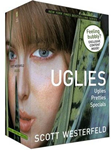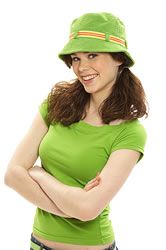 Inquiry 10: Utopian Societies and Literature
Inquiry 10: Utopian Societies and Literature
Draw on the natural interests of young people and design exciting, authentic learning environments. Make technology part of your classroom lifestyle.
Click the comic link or comic image on the right to view the graphic version of Utopia?? inquiry. Read the narrative below.
Context. After watching Apple's 1984 Commerical, listening to Imagine by John Lennon (YouTube video), and talking about movies like Children of Men, The Truman Show, and the Matrix, the teacher introduced the concept of Utopian societies.
Kaylee browsed the list of novels provided by the teacher. She also explored some of the websites associated with the author and the specific novels. From classic pieces of literature to new graphic novels, she could select any book she wanted to read. She spent a few minutes writing in her blog about her selection: Uglies by Scott Westerfeld.
 Utopia, Dystopia, Eutopia, Outopia, and Heteotopia
Utopia, Dystopia, Eutopia, Outopia, and Heteotopia
- Books
- 1984 by George Orwell
- Anthem by Ayn Rand
- Brave New World by Aldous Huxley
- Clockwork Orange by Anthony Burgess
- Fahenheit 451 by Ray Bradbury
- Gathering Blue by Lois Lowry
- The Giver by Lois Lowry
- Glass Bead Game by Hermann Hesse
- The Handmaid's Tale by Margaret Atwood
- Lord of the Flies by William Golding
- Messenger by Lois Lowry
- Player Piano by Kurt Vonnegut
- Uglies, Pretties, and Specials Trilogy by Scott Westerfeld (Blog)
- Utopia by Sir Thomas More
- V for Vendetta by Alan Moore
- We by Yevgeny Zamyatin
- Movies: AI, Blade Runner, Brazil, Children of Men, Escape from New York, I, Robot, Gattaca, Logan's Run, Matrix Trilogy, Metropolis, Minority Report, The Truman Show
- Playaway MP3 Audiobooks: The Giver, Fahenheit 451
- Teacher Resources
- Search Thinkfinity for Utopia, Dystopia, Eutopia, Outopia, and Heteotopia
- Photo Library - Utopia from New York Public Library
- Audio - Imagine by John Lennon (YouTube video)
- Video - Apple's 1984 Commerical
- Wikipedia - Dystopia, Utopia and Utopian and Dystopian Fiction
- Student Wiki Project - Discovery Utopias (Note the discussion area)
- Websites - Society for Utopian Studies
- Related topics: Virtual Worlds



 Questioning. As Kaylee read the book and wrote in her blog, she wondered:
Questioning. As Kaylee read the book and wrote in her blog, she wondered:
- What would it be like to live in a utopian society?
- Have people actually created these types of societies in real-life?
- What novel character is most and least like me?
- How do the characters, plots, and settings in various fiction novels compare?
- How does each novel reflect the period it was written?
As Kaylee browsed the Internet for information about the book, she discovered a fake movie trailer at YouTube. She thought she could do a better job and wrote about the actors and setting she would choose for the movie version of the book. She also began reading the author's blog to learn about about other works by Scott Westerfeld.
Critical and Creative Thinking. Using the groups feature of LibraryThing, Kaylee met with students reading different books and created a list of features of Utopian societies. She also distinguished the term Dystopia from Eutopia, Outopia, and Heteotopia.
The teacher pointed out that many groups in the past have tried to create Utopian societies. Built in the 1800s, New Harmony is an example in Southern Indiana. Kaylee had heard of New Harmony, but had never taken the time to visit this small town. Much of the town still exists. Kaylee wondered if New Harmony matched the list of Utopian society characteristics she'd gathered during her book discussions.
 Transformation. Kaylee used the history of New Harmony as the basis for a historical fiction movie trailer. She mixed photos she took from a Saturday trip to the area with historical documents and images. She's going to work with a couple other students who think this project would be fun!
Transformation. Kaylee used the history of New Harmony as the basis for a historical fiction movie trailer. She mixed photos she took from a Saturday trip to the area with historical documents and images. She's going to work with a couple other students who think this project would be fun!
Insight/Extension/Transfer. After working with students who read other books, Kaylee's interested in reading the other books on the list. She's also got the movies on her NetFlix list to watch.
